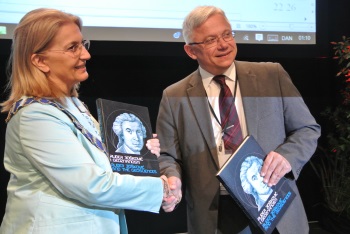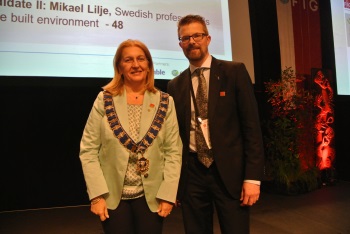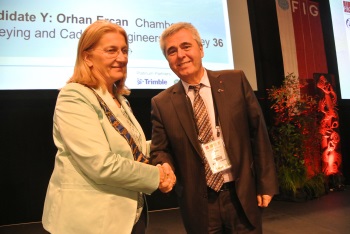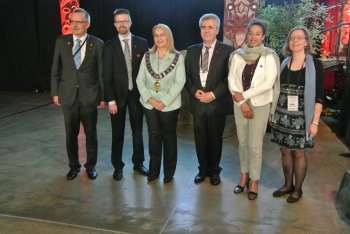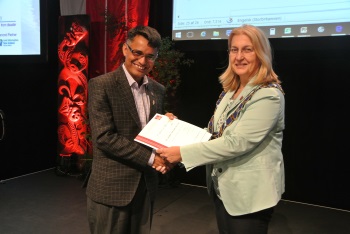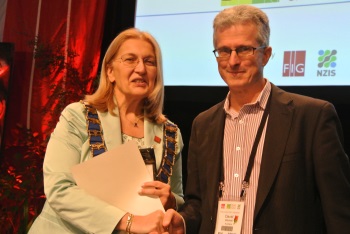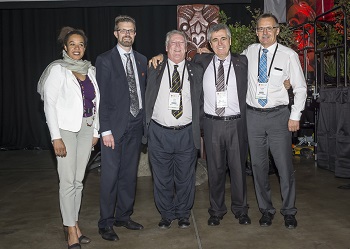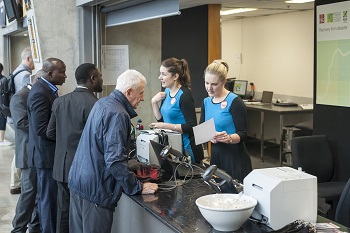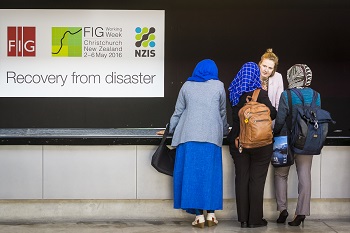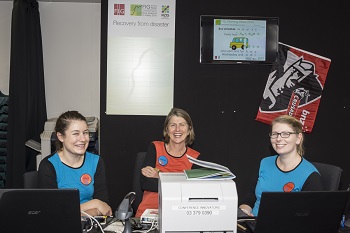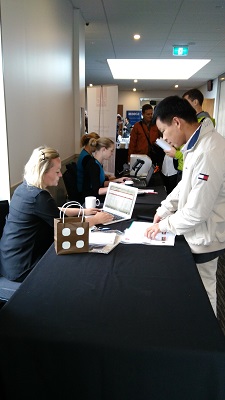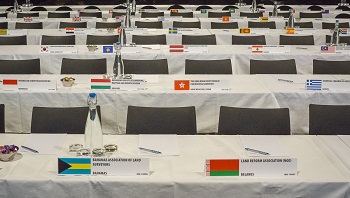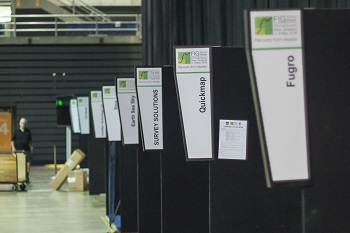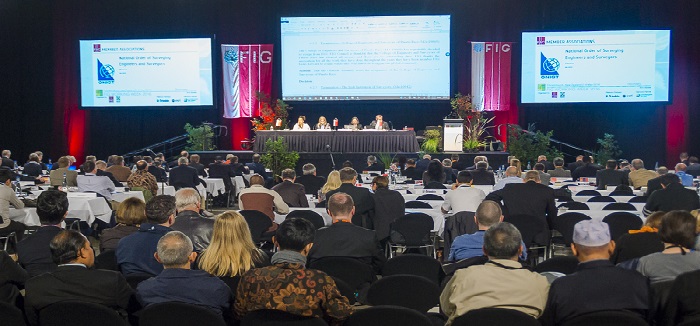
|
|
During the FIG Working Week 2016 in Christchurch, New Zealand,
the 39th FIG General Assembly was held; the first session on 2 May
and second session on 6 May 2016. The delegates filled out the large
arena - a much different venue than at previous FIG conference, but
this was not a “normal” Working Week due to the fact that the
conference centre in Christchurch was destroyed during the large
earthquakes in 2011 and 12, and today, a new Conference Centre has
not yet been built up. The sports arena made it however out for a
useful conference centre.
|
 |
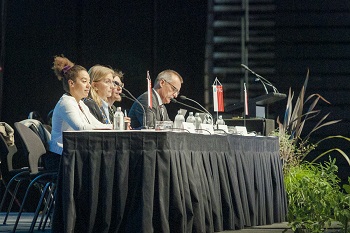 |
|
FIG Vice President Diane Dumashie (left), FIG
President Chryssy Potsiou, FIG Director
Louise Friis-Hansen and FIG Vice President Rudolf
Staiger
|
 |
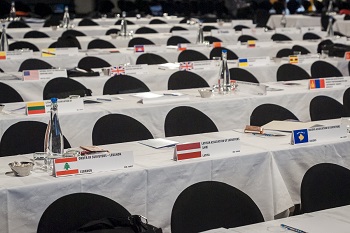 |
|
At the first General Assembly 50 Member Associations were
represented.
|
 |
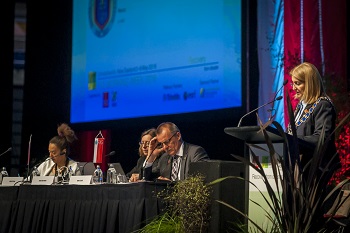 |
|
FIG President Chryssy Potsiou
welcomes FIG members to Christchurch and the 39th General Assembly. FIG Vice President Diane Dumashie
(left), FIG Director
Louise Friis-Hansen and FIG Vice President Rudolf
Staiger following Chryssy Potsiou's report. Read the
President’s Report
|
 |
 |
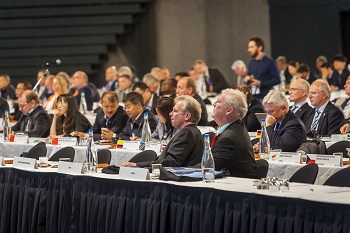 |
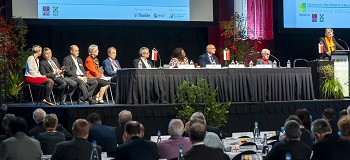
Each Commission Chair gave a short report on their Commission activities since the FIG Working Week in
Sofia. Read the
Commissions reports |
 |
|
|
 |
|
Brian Coutts, Chair of Commission 1 making his
report to the General Assembly.
|
Liza Groenendijk, Chair of Commission 2 making her
report to the General Assembly.
|
 |
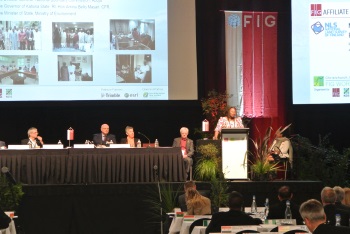 |
|
Enrico Rispoli, Chair of Commission 3 making his
report to the General Assembly.
|
Angela Kesiena
Etuonovbe, Chair of Commission 4 making her report to the
General Assembly.
|
| |
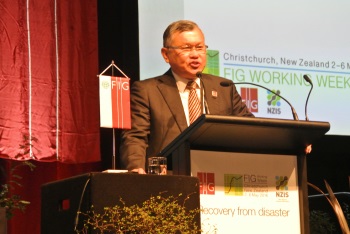 See Lian ONG, Chair of Commission 10 making
his report to the General Assembly
|
 |

Diane Dumashie, Chair of Regional Capacity Network, making her report to the General
Assembly
|
 |
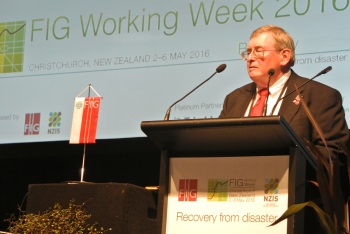 |
|
Christiaan Lemmen, Director of
OICRF making his report on the OICRF activities in 2015
|
John Hohol, President of FIG Foundation making his
report to General Assembly
|
Welcome Reception
|
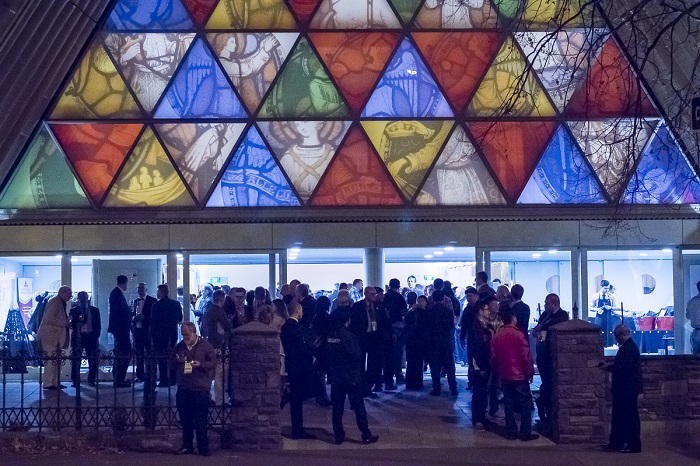
The Welcome Reception was held at the
Transitional Cathedral in Christchurch. The Transitional Cathedral
was built after the original Christchurch Cathedral was badly
damaged in the earthquake in February 2011. This is the world’s
only cathedral made substantially of cardboard and is affectionally
known amongst the locals as the ‘Cardboard Cathedral’.
|
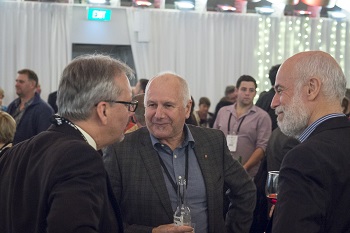
Brent Jones, Anthony Burns
|

Jan Lawrence from the NZIS office
|
 |
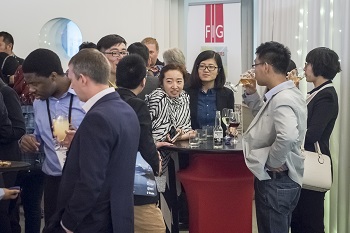 |
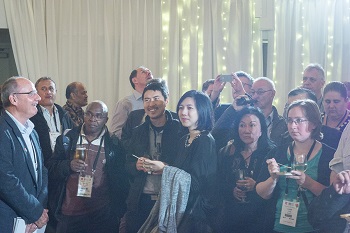
Many of the delegates, spouses and exhibitors had
found their way to the Transitional Cathedral.
|

The evening offered a great opportunity to
network with fellow peers from around the world.
|
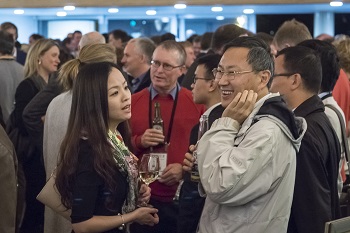 |
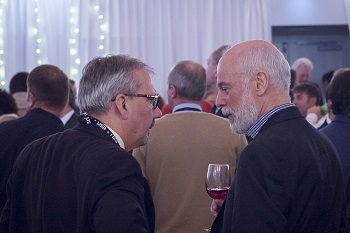 |
 |
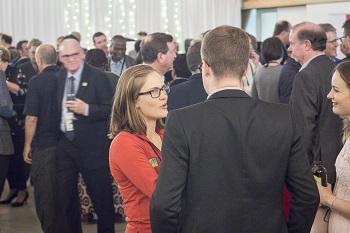 |
 |
 |
|
Warm welcome by Mark Allan, NZIS President
|
Simon Ironside, Chryssy Potsiou
and Mark Allan welcoming all the participants
to the 2016 FIG Working Week
|

Warm welcome by
Chryssy Potsiou, FIG President
|

Warm welcome by Simon Ironside, Co-Conference
Director
|
 |
 |
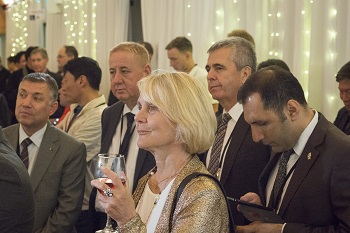 |
 |
 |
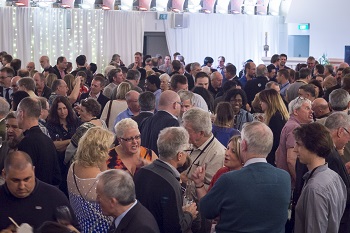 |
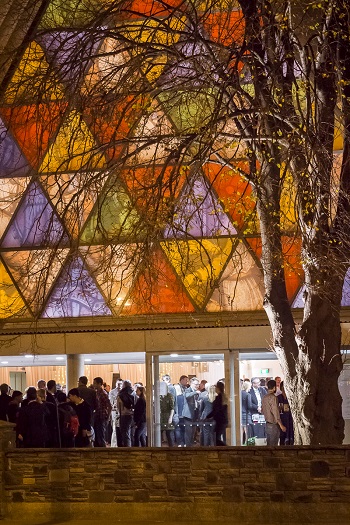 |
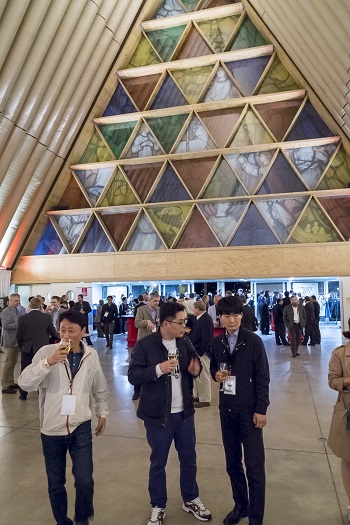 |
Opening Ceremony
|
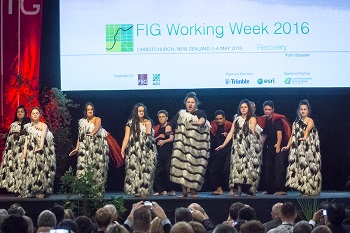 |
 |
|
At the Opening Ceremony all participants were greeted festively
in the traditional Maori way.
|
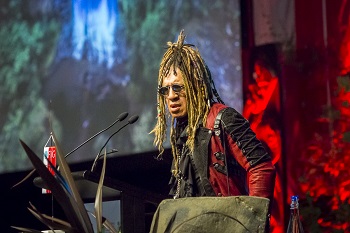 |
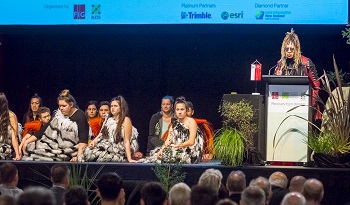 |
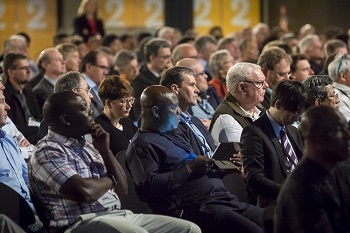
|
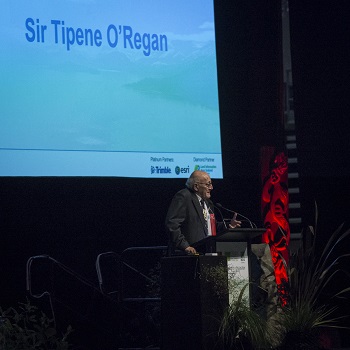
Sir Tipene O’Regan welcoming the participants to
Christchurch. Sir Tipene O'Regan has been
commemorated as one of the Twelve Local Heroes of Christchurch. He
spoke over the importance of “Identity, names and places” and
explained why it is important for Maoris to identify where a person
is from.
|
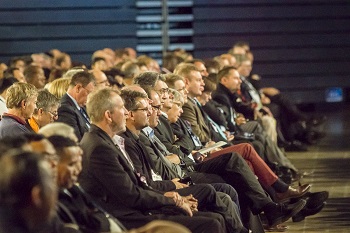 |

Mark Allan, President of New Zealand Institute of
Surveyors, NZIS, the local host welcomed all participants to this Working Week in
New Zealand
|
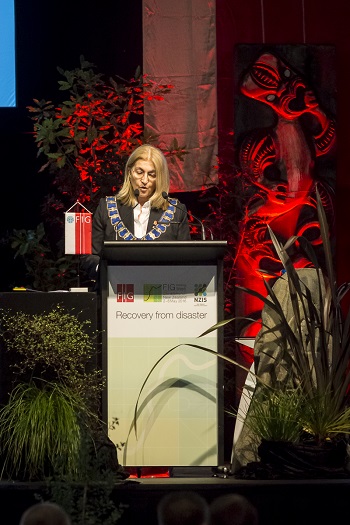
FIG President Chryssy Potsiou
welcomed all participants to this
Working Week in New Zealand. Read her
opening address
|
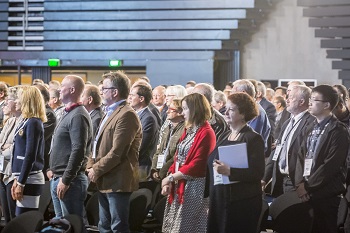
Participants listening to the FIG fanfare at the
Opening Ceremony.
|
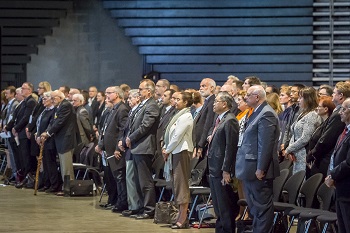 |
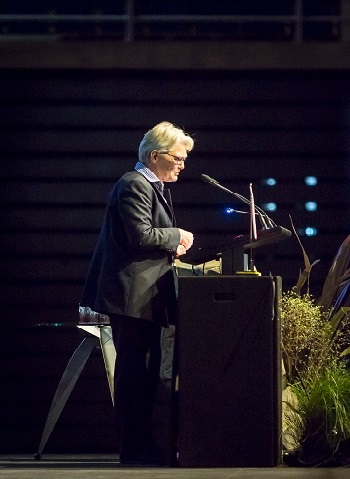 |
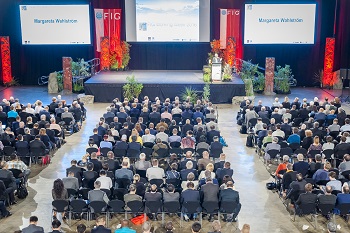 |
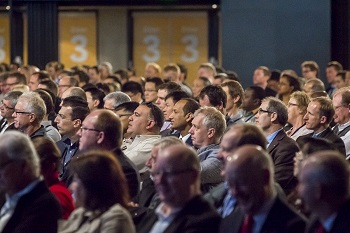 |
|
The key note speaker of the Working
Week was Margareta Wahlstrom who has been the UN Special
Representative of the Secretary General for Disaster Risk
Reduction until the end of 2015. Margareta Wahlstrom
underlined that disaster is a social issue as well as of
economic – what are the immediate costs, but also what are
the costs in 5-10 years. There is a special focus right
after a disaster, but a focus on the longer run is also
important. She furthermore challenged the surveyors
stating that “we need people to reach out to decisions
makers on the work on disasters” and “disasters are a
political issue”. Hereto she encouraged surveyors to be
more visible, and to promote themselves and the work that
surveyors do much more than is the case today.
|
Plenary sessions
Tuesday 3 May 2016 - The Christchurch story “Christchurch’s
response to the 2011 earth quake”
|

From left Mark Allan,
Duncan Gibb, Hon Nicky Wagner, Hon.
Lianne Dalziel and Chryssy Potsiou
The first plenary session was dedicated the “Christchurch
Story”. The presenters pointed out that a large amount was paid out
in the first week after the earthquakes in order to keep people
alive, and that “we should have been better prepared if we had
learned from the earlier experience”. One vital focus was to get
business up and running as fast as possible so that a “normal” life
could be somehow maintained, and to show the inhabitants of the area
that “we are here to help you”; e.g. establishing free legal advise.
It was furthermore stated that “it is all about people” pointing out
that you cannot communicate too much in such a crisis situation and
finally that “hope is not a method”.
|
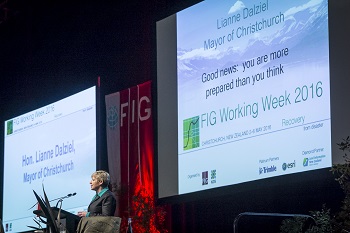
Hon. Lianne Dalziel, Mayor of Christchurch
|
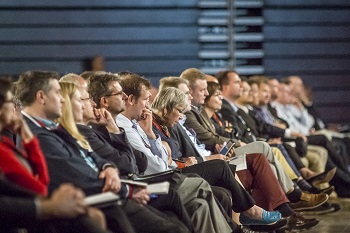 |
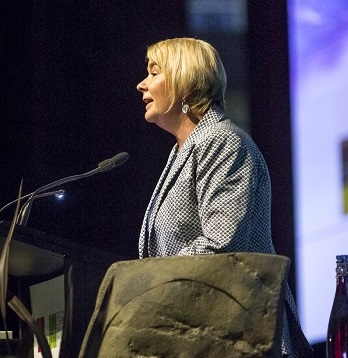
Hon Nicky Wagner, the Associate
Minister supporting Greater Christchurch Regeneration
|

Mr. Duncan Gibb Founding General Manager of
SCIRT (Stronger Christchurch Infrastructure Rebuild Team)
|
 |
 |

Hon. Lianne Dalziel (left) and Margareta
Wahlström
|
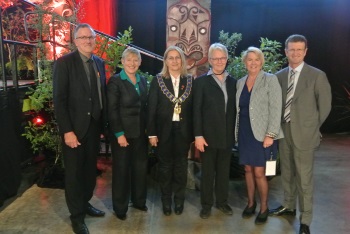
From left: Warren Haynes, Lianne Dalziel,
Chryssy Potsiou, Margareta Wahlström, Nicky Wagner
and Duncan Gibb
|
Wednesday 4 May 2016 - Disaster Management and Recovery framework –
The Surveyors response
|
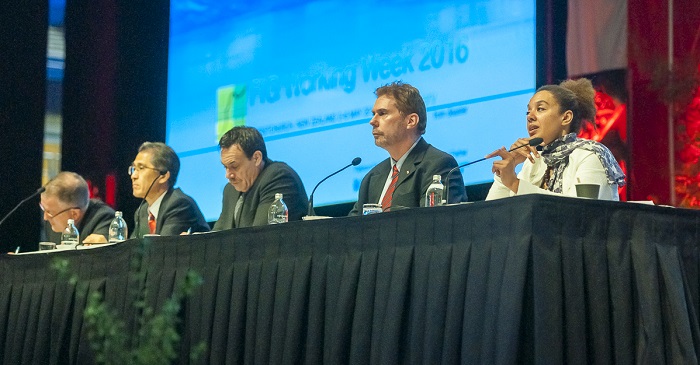
From left: Mr. Warren Haynes,
Dr. Hiroshi Murakami, Mr. Gregory Scott,
Mr. Keith Bell and Ms. Diane Dumashie
|
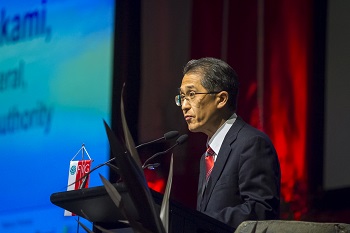
Dr. Hiroshi Murakami gave the
participants another real-life insight in a disaster area. He
pointed out that improvements are needed to prepare for future
catastrophes, hereunder to have updated maps of areas that can help
to compare the situation before and after a disaster.
|

Dr. Hiroshi Murakami almost did not make it to
the Working Week because Japan was hit by earthquakes just three
weeks before the Working Week and his help was needed. Luckily he
still managed to come
|
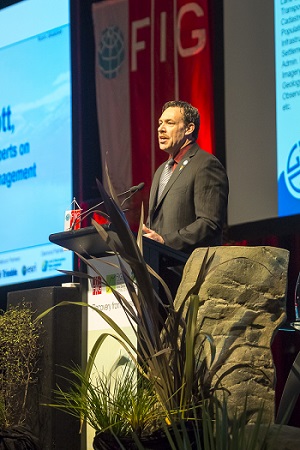
Gregory Scott, leader of the secretariat for the United Nations
Committee of Experts on Global Geospatial Information Management
(UN-GGIM), presented the global perspective with impressive
statistics on disaster loss – both in terms of numbers of affected
people (more than 1.5 billion) and in money (more than one trillion
dollars). The Post-2015 Development Agenda is actionable, and data
about people and place is an indispensable element in this agenda.
|
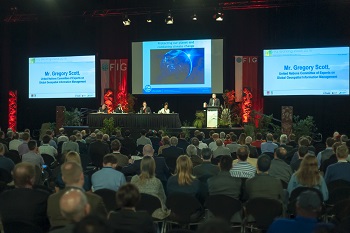 |
 |
|
|

Keith Bell, World Bank, stated
that 80% loss of people in connection with disasters come from low
income countries. The complexity for these countries is much larger
than in the developed world. The best situation is of course to
prepare for disasters, but after a disaster the key term is “Build
Back Better”. The
“Build Back Better” concept should be used to rethink an area and
not “just” build up what was there before. It is important is to
have reliable geospatial data – and the World Bank recommends to get
this on a Fit-for-Purpose basis that secures that there will be data
although it may not be fully detailed.
|
 |
 |
 |
Thursday 5 May 2016 - The Public, The Private and the Peoples
response for Disaster Management and Recovery in the Surveying
Profession - New technologies
|

From left: Mr. Simon Ironside,
Mr. Sam Johnson, Prof. Dr. Jixian Zhang,
Mr. Mark Nichols and Prof. Rudolf Staiger
|
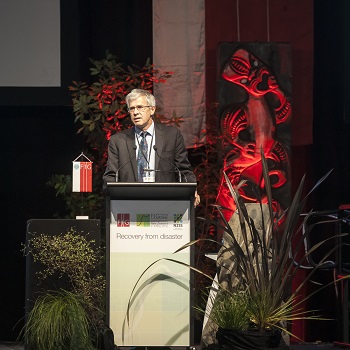
Mr. Mark Nichols, Trimble Navigation, stated
that the profession is moving from maps to models. He presented an
impressive description of Trimble’s role right after the earthquakes
in Christchurch. Surveyors need to keep their current skillsets but
enhance them to become spatial data experts, understanding and
interpreting a plethora of data from several sources. The challenge
is to effectively manage spatial information from everywhere
including 1cm accurate data available for everyone. This requires
the Surveyor to 1) Deliver the right information to the right people
and 2) Manage all the spatial data during the life cycle of a
project
|
 |
 |
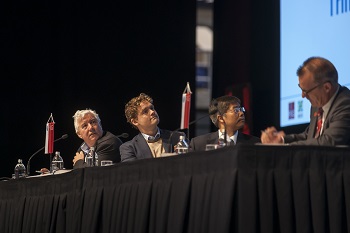 |

Prof. Jixian Zhang gave a very impressive presentation on the use
of remote sensing and photogrammetry in disaster response in the
Chinese context. The Chinese Government has invested heavily in
satellite based remote sensing, photogrammetry, airborne mapping
including unmanned platforms/UAVs and mobile mapping system to
respond to and mitigate natural disasters in China Photogrammetry
and remote sensing play an important part of the National Disaster
Action Plan.
|
 |
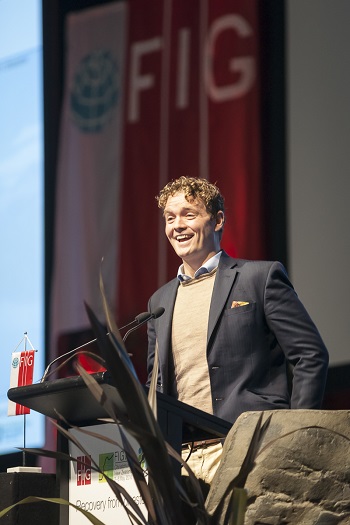
The final speaker was Sam Johnson. Sam is a shining
example of youth leadership. He was the leader of the Student
Volunteer Army (SVA) in the aftermath of the 22 February
Christchurch earthquake
|
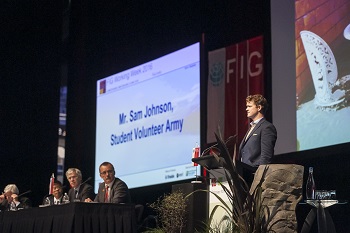
Sam gave and inspirational talk on harnessing students/youth in
response to disaster situations. The SVA tapped into a well of good
will and enthusiasm to help people. Their work is now part of
Christchurch. Sam has now gone on to help people in Nepal and his
message is to question processes in a disaster situation. His
preferred method is to galvanise volunteers, what he calls utilising
the powerful skills of the unskilled. This is, he argues, “perfect
in its imperfection”. Sam also challenged FIG and Member
Associations to establish a network of young surveyor volunteers to
respond to disaster relief - Surveyors without Frontiers
|
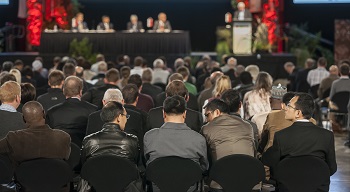 |
Exhibition
|

A well designed exhibition area met the
participants at the tea breaks and during lunches. The two platinum
sponsors Esri and Trimble were occupying the centre of the large
multi arena. The Diamond Partner LINZ together with the other
exhibitors filled out the exhibition space which was very crowded
during the breaks. Wednesday afternoon the exhibition opened for the
public. Many talks with exhibitors continued after the breaks and
many took the opportunity to clear their head in the exhibition area
during a session.
|
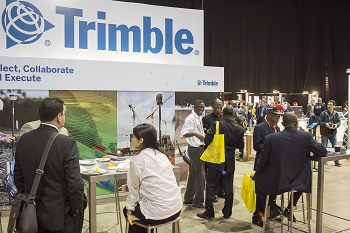
Trimble was one of the two international platinum sponsors
occupying the central area at the exhibition - there was a continuous
flow of visitors to the stand.
|
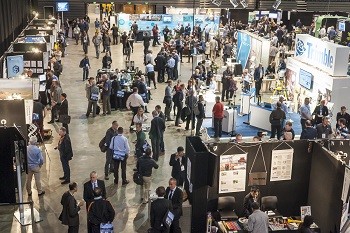 |
 The other international platinum sponsor of the Working Week was
Esri.
|

|
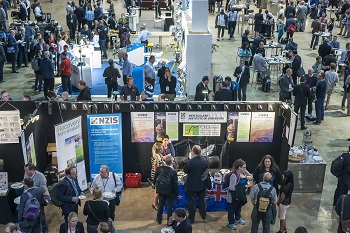 |
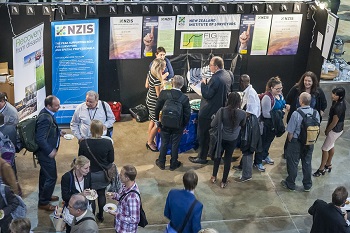
NZIS, the local host had a well attended booth
|
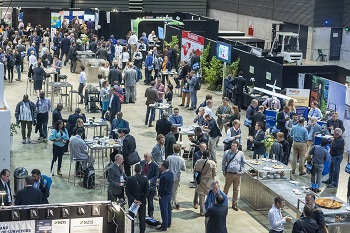
The exhibition space which was very crowded during the breaks.
|
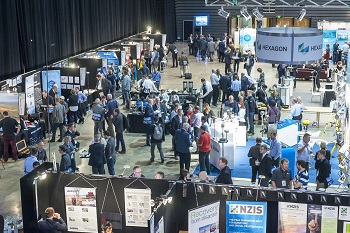
Leica/Hexagon was one of two silver sponsors of the Working
Week.
|
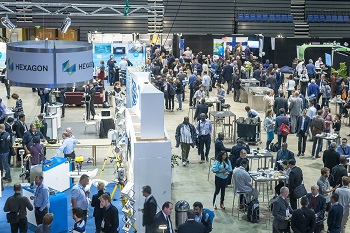 |
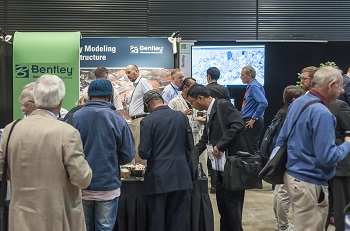
The other silver sponsor was Bentley Geosystems.
|
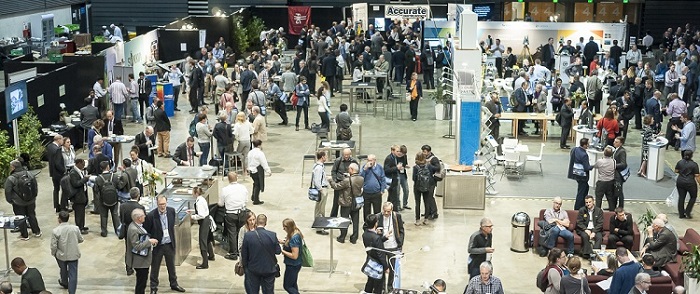 |

FIG Young Surveyors Network had a small
booth/meeting place in the exhibition area.
|
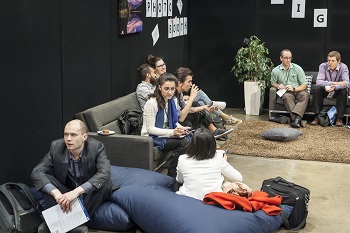
Young surveyors having spontaneous Speed Networking session during
the coffee and tea breaks as well as interesting conversations,
sharing of ideas and inspirations.
|
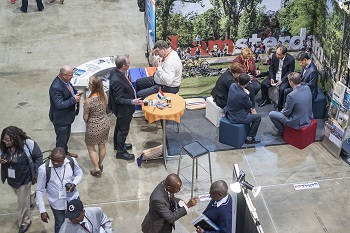 |
 |
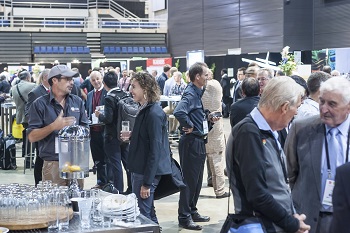 |
 |
 |
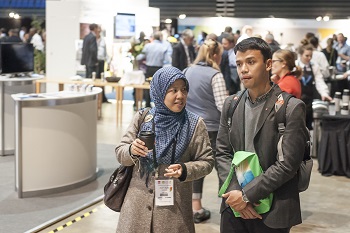 |
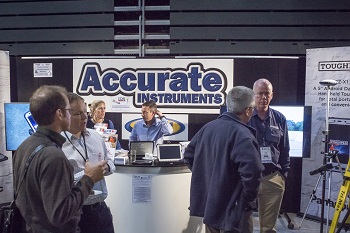 |
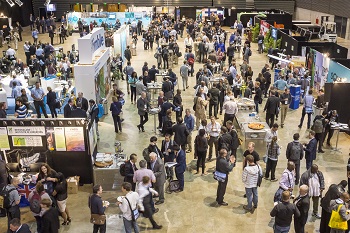 |
Technical sessions, Special Forums, Workshops and Pre-events
Presidents' meeting
|
 |
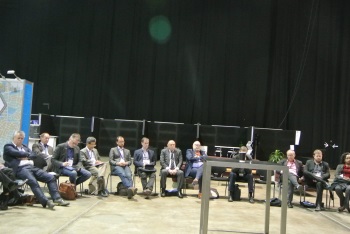 |
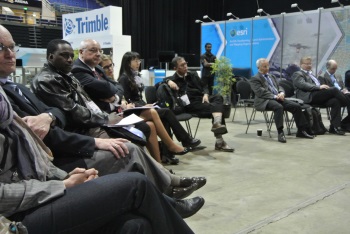 |
|
SIDS Workshop
|
 |
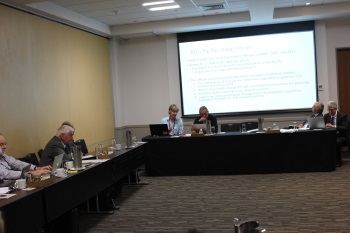 |
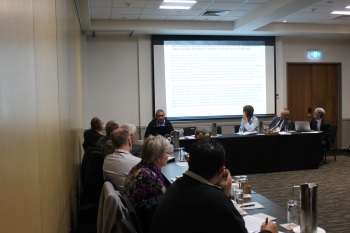 |
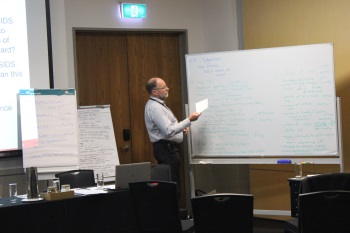 |
History Symposium
|
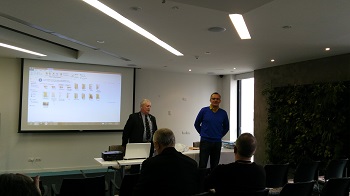
Welcome address by FIG Vice President Rudolf Staiger
|
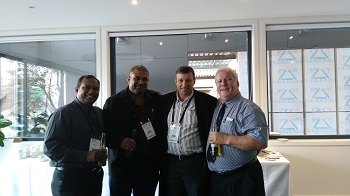 |
 |
|
Reference Frame in Practice
|
.jpg) |
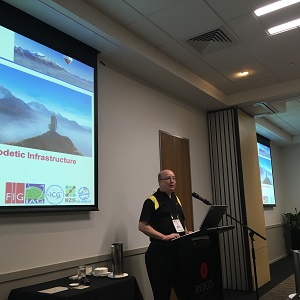 |
 |
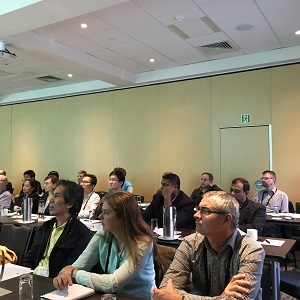 |
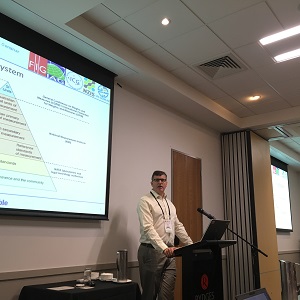 |
|
More photos from the Reference Frame in Practice.... |
|
Technical sessions
|
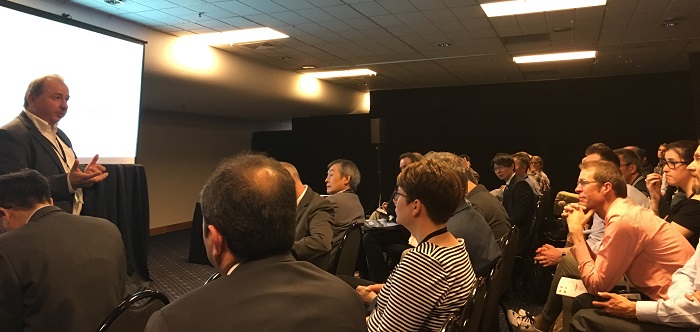 |

The ten FIG Commissions, Young Surveyors, FIG Networks, Permanent
insititutions and Task Forces have been heavily involved in the
planning of the technical sessions that covered a broad range of
themes within surveying, and many with the overall theme “Recovery
from Disaster” in mind. The technical sessions were a mixture of
presentations and in-depth discussions. There were special sessions
on the Voluntary Guidelines organised together with FAO, a special
session on Nepal organised jointly by FIG Young Surveyors and
UN-Habitat/GTLN on Nepal Building Back Better in order to introduce
challenges of building back better initiatives in the
post-earthquake situation in Nepal including rehabilitating
informal/non-formal settlers and risk hazard-prone settlements, to
present current efforts of building back better Nepal and to explore
the way forward based on international best practices.Special
sessions in cooperation with UN-Habitat/GLTN, a special session
elaborating on the pre-conference workshop on SIDS in which a
declaration was finalised, and a high level special session on the
Fit-for-Purpose approach launching a Fit-for-Purpose guide and many
more. See the
proceedings for the full list of sessions, papers and
presentations.
|
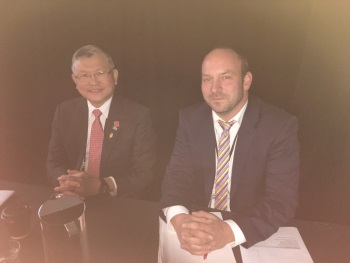 |
 |
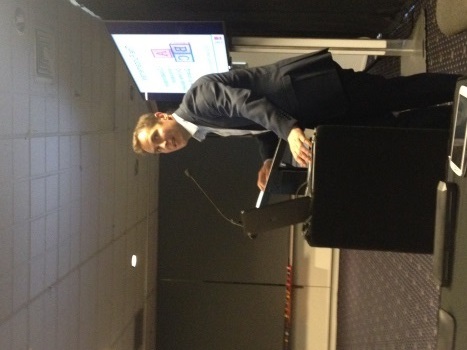 |
 |
 |
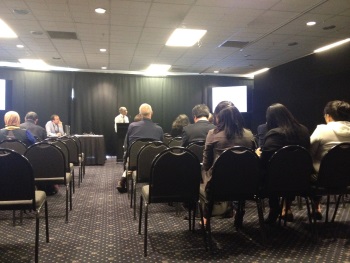 |
 |
|
FIG Foundation Meeting
|
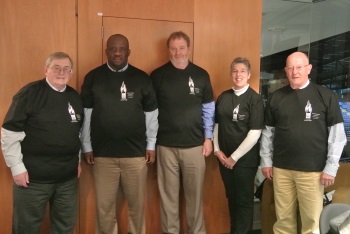 |
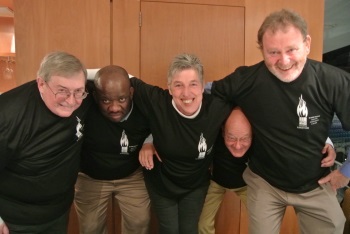 |
|
FIG Foundation meeting - in Trimble Charity run t-shirts: President
John Hohol, William Marbel, Trimble,
Mike Barry, Liza Groenedjik and
Paul van der Molen
|
 |
|
 Women in Spatial/Surveying Networking Breakfast
|
|
 |
 |
|
Meeting with Chinese Society of Surveying, Mapping and
Geoinformation, Prof.Rudolf Staiger(left), Dr. Qian
Wang , Prof. Chryssy Potsiou, Prof.
Jixian Zhang, Ms. Louise Friis-Hansen
|
Prof. Rudolf Staiger(left), Dr.vQian
Wang, Prof. Jixian Zhang, Ms. Tian
Tian
|
 |
|

FIG office Claudia Stormoen and Louise
Friis-Hansen together with the delegation from Nepal.
A special session on Nepal was organised. The session was jointly by
FIG Young Surveyors and UN-Habitat/GTLN on Nepal Building Back
Better in order to introduce challenges of building back better
initiatives in the post-earthquake situation in Nepal including
rehabilitating informal/non-formal settlers and risk hazard-prone
settlements, to present current efforts of building back better
Nepal and to explore the way forward based on international best
practices.
|
|
|
Social Events
Kiwi evening / FIG Foundation Dinner - Tuesday 3 May
|
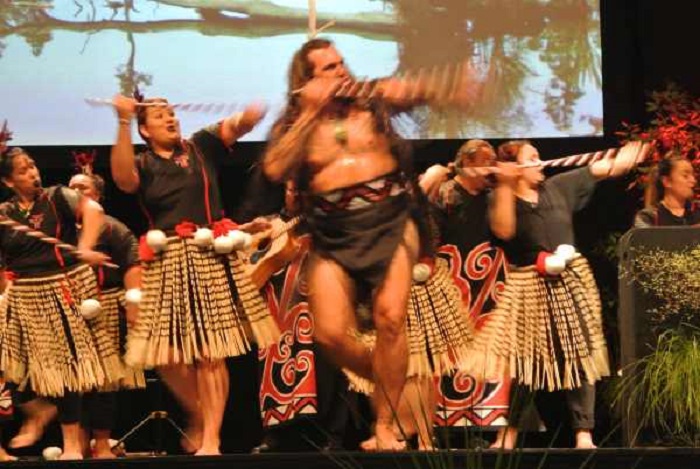
The Kiwi Evening which is also a dinner in support of FIG
Foundation and supported by Trimble included a traditional Maori
performance. At this performance especially the male participants
had the possibility to find their inner male soul by shouting out
loudly and practise their dancing skills. The relaxed atmosphere –
apart from the shouting – gave a good opportunity to mingle and
meet.
|
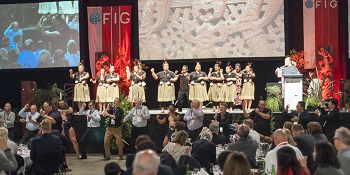 |
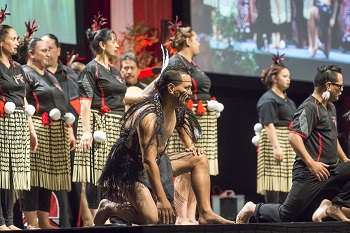 |

Maori hello
|
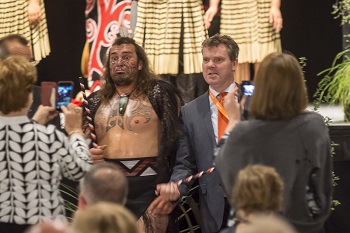 |
 |
 |
 |
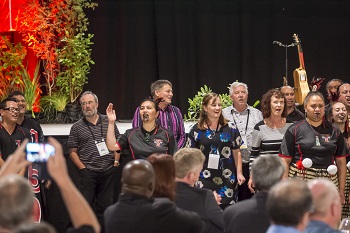 |
 |
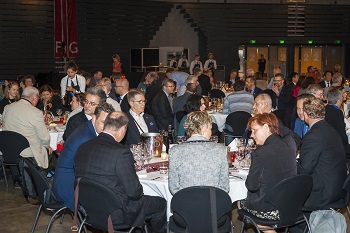 |
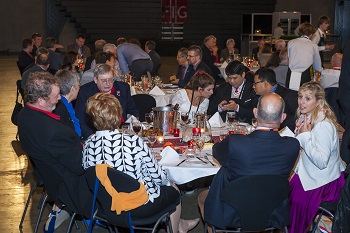 |
 |
 |
 |
 |













































































































































.jpg)





































